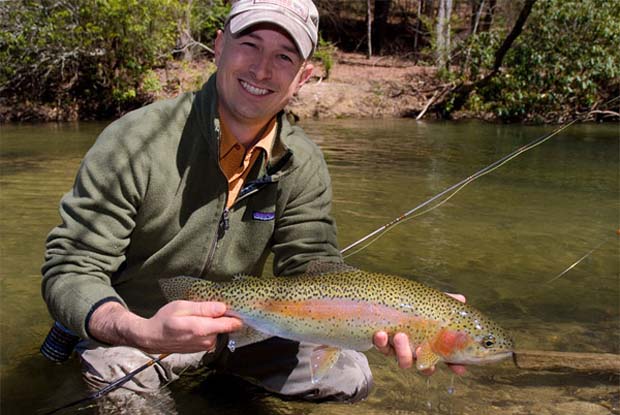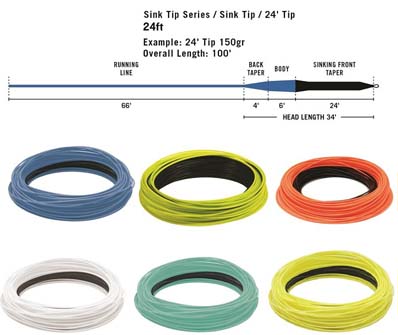Viewpoint and counterview
[dropcap]K[/dropcap]elly Galloup, Slide Inn Lodge and fly shop, examples in a YouTube video explains some great techniques regarding; improving your short game. Much of it is heretical to old timers who cannot seem to enter the 21st. But Kelly’s experience, triumphs and logic should hold sway for the rest of us. Be sure to watch video if you want to up your game. Actually, his way of nymphing is easier, and more productive than the old standard.
Zach Matthews (Itinerante Angler) is an Atlanta attorney whom I am guessing has more fishing hours than billable hours (just kidding) – knows his stuff inside and out. He, like Kelly Galloup; Louis Cahill and Kent Kliewen (Gink & Gasoline) and Marshall Cutchin (MidCurrent), when he does opine – these guys know the subject of fly fishing pretty much inside and out so it would be prudent to pay attention to their obiter dicta.
For reading there are lots of books that should be in your library. Here are but a few: Fly Fishing The Florida Keys, Fly Fishing For Redfish, Fly Fishing For Bonefish (both the latter by Chico Fernandez with Aaron Adams) and Steve Kantner’s The Ultimate Guide to Fishing South Florida on Foot and anything Galloup or Matthews has written. Are there more great books about how to fly fish? You bet there are.
Matthews’ Step 4 and Step 5 / #4 Know When to Use Monofilament Versus Fluorocarbon
Monofilament is nothing more than a single-thickness nylon thread. Nylon, which was invented by Dupont just before World War II and originally marketed for toothbrush bristles and ladies’ hosiery, is made by mixing a plastic polyamide polymer and melting it, then extruding it through a die tip as a single strand, which may vary in size, to make different thicknesses and thus different break strengths once it cools.
Fluorocarbon is similar to nylon in construction, but is made of a different chemical structure (polyvinylidene fluoride) which has slightly different properties. First and foremost monofilament will break down when subjected to UV light or simply due to age; throw out your old monofilament spools every three or so years. Fluorocarbon, at least in theory, is forever.
Secondly, fluorocarbon has a lower refractive index, meaning it’s clearer than monofilament because it allows more light to pass directly through it rather than scattering it everywhere as white light.
Finally, fluorocarbon is denser than monofilament. Density is the amount of “mass” or weight crammed in a given volume, or space. The denser something is, the faster it will sink in water. (We’re going to come back to this in a minute). “Density-compensation” is a technique developed by line companies which make sinking lines. In the old days, a sinking line would all be the same density from one end to the other; this resulted in the mid-section of the line sinking at the same rate as the front and rear sections. Of course, the rear was, in any fishing situation, always being held up by the angler. The result was a U-shaped bend as the line went down and the thick midsection sank fastest; not ideal for stripping streamers. Once they were invented, density-compensated lines placed denser material closer to the tip, in some cases by literally sprinkling in more tungsten dust. This made the tip section sink faster and thus resulted in a nice even sinking profile, more of a straight diagonal line from the angler to the fly.
You can adopt this same principle when it comes to choosing your tippet and constructing your nymphing or streamer-fishing rig: by placing fluorocarbon tippet at the tip end of a (less dense) monofilament leader, you add density-compensation to the system by putting the fastest-sinking material at the very tip, and you also get the benefit of a more-invisible tippet section adjacent your fly. So, always use fluorocarbon as your final connection. Because you don’t want the U-bend problem that non-density compensated sinking lines all have, it actually makes both financial and fishing sense to stick with ordinary monofilament tapered leaders, employing fluorocarbon only for the final two or three feet.
#5 Density Versus Weight, or “Sink Tips are Confusing”
Sinking lines are very confusing. This is because anglers have multiple competing weights and measures to consider when trying to dial in how exactly to get that fly to sink six feet underwater, which really doesn’t seem like such a hard problem, does it?
It helps to understand, again, the difference between density and weight. Fly lines are marketed by line weight, for example, an “eight weight” line. This is a measurement of how many “grains” of weight the front thirty feet of a line has (a “grain” is an old term borrowed from the ammunition industry, where one grain weighs about two one-thousandths of an ounce). Although there are standards as to what number of grains of weight in the front thirty feet constitutes such-and-such a “line weight”, for these purposes you only need to remember that how much a line weighs has nothing to do with how fast it sinks.
After all, you can buy a “12 weight” line that floats, even if it might snap a 2 weight rod if you were daring enough to try to cast such a heavy line on such a light rod. Sink rate, instead of being a measurement of how much the line weighs, is a function of how dense the line is. In other words, how much mass is crammed into a given amount of volume.
See, volume is the key, here: a 2 weight floating line is very, very skinny, whereas a 12 weight floater is as thick as dry macaroni. Although it may be heavy, that thick floating line contains enough air in the form of hollow glass microspheres to remain afloat, sort of like a heavy metal battleship. A sinking line, meanwhile, is always very narrow, even in a 12-weight size. This is why sinking lines across the board are narrower than floating lines; not only do they have less volume than a floater, but what volume they do have is packed with heavy metal dust (typically tungsten) instead of empty, hollow spheres.
When picking out a sinking line, follow a two-step process. First, match the “line weight” to the rod weight; for example, a modern eight weight sinking line should go with a modern eight weight fly rod. Now that the line is matched to the rod for casting purposes, you can throw out all further consideration of weight, and instead consider how fast you want the line to sink. Type VI sink tips are very dense, and thus sink at a faster rate than Type I sink tips, which are not as dense. Generally speaking the swifter or deeper the water, the faster the sinking line you will need.
The aforementioned portion of Matthews’ blog titled Ten Tips to Improve Your Short Game is reprinted here with permission. Go to itinerantangler website to read complete story – you will need to log in . . .
NOTE: Featured Image credit Great Southern Fishing Show – Zach Matthews www.northatlantatradecenter.com.








